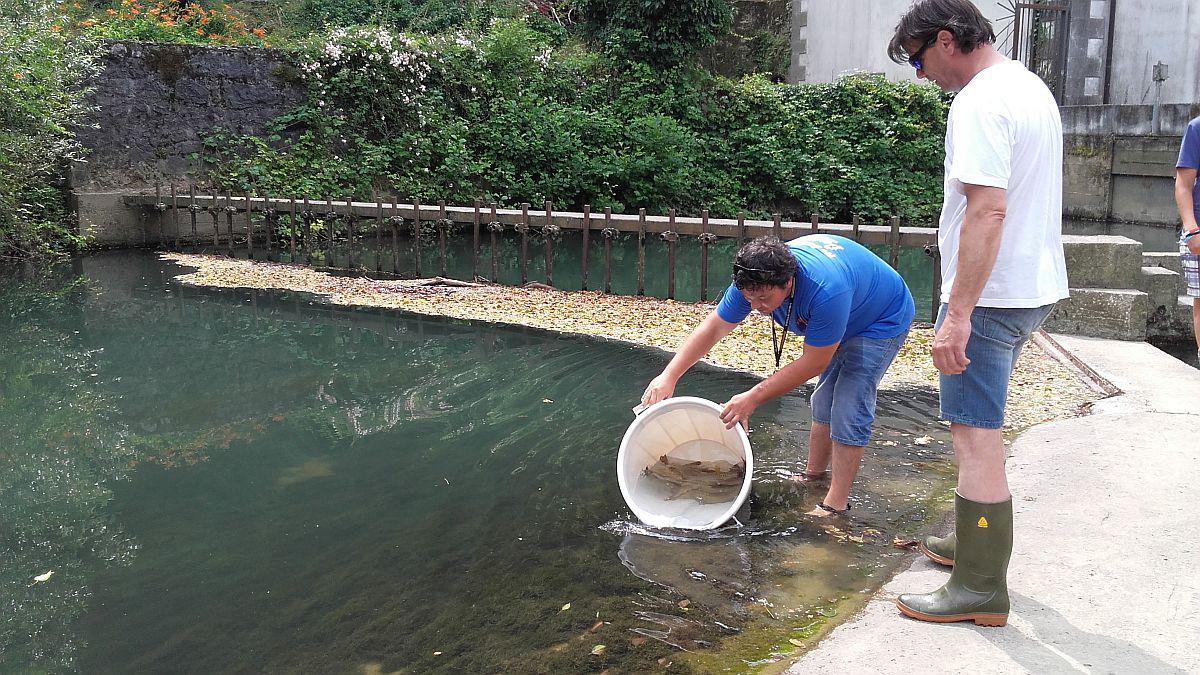
Members of the Renče fishing society have put grown-up Soča trout into the Vipava River at several location: Zalošče, the Pekel Gorge, Prvačina. According to the society’s president Marko Lipovž: “Autochthonous grown-up Soča trout were donated to us by the Fisheries Research Institute of Slovenia. This is our third insertion into the Vipava this year. We’ve opted for grown-up fish since they will spawn this season, which is how we’ll get autochthonous wild trout, which we wish to have very much in our waters and for which we try so hard.”
Fishing communities are always glad to see fish offspring, and there’s quite a lot of it in Renče. One of the keenest young fishermen is Tobias Susič Hosner, a teenager from Zalošče: “I’ve been fishing for four years. I’ve caught quite some fish this year already. The biggest was a trout I caught on 1 April, it weighed over 60 kilograms.”
Slovenian fishers have also pointed out some problems. Miroslav Žaberl, president of the National Fishing Union of Slovenia: “I have to say that fishermen are disappointed about polluters – let’s just take Kemis (t/n: a chemical factory that burned down, heavily polluting a nearby rivulet) for example. Then there are unacceptable interventions into the watercourses, which steal habitat from the fish, impassable waters that take away space for spawning and the still unsolved issue of conflict between protected fish-eating birds, especially the great cormorant, and their prey.”
Mojca Dumančič, TV Slovenija; translated by K. Z.

































































